Tattoo Aftercare: A Dermatologists Guide on Proper Tattoo Care
07 December, 2022So, you’re here, which means you either just got a new tattoo or are about to. No matter which it is, the topic of tattoo aftercare is crucial. We know there is a lot of information out there about what you should do to ensure your ink heals properly and stays bright.
Unfortunately, much of the information available can be conflicting, such as advice on how often to moisturize or when to remove the bandage, which might contradict the instructions your artist gave you. It is frustrating when you don’t know who or what to believe, and it can lead to major issues with your ink.
Right now, in the U.S., there are only seven states in which tattoo artists are required by law to provide their clients with aftercare instructions from the public health department (Alabama, Arkansas, Delaware, Louisiana, Massachusetts, Michigan, and North Dakota). That’s not to say all artists don’t give proper advice, but it can be confusing.
If this sounds like you, then we have felt your pain, and you’re in the right place. We are sick of the confusion and misinformation – that’s why we created this guide for you and had it reviewed by a practicing dermatologist with a passion for tattoos! This guide covers all essential steps for tattoo care.
How Do I Prepare for a Tattoo Appointment?
Tattoos are thrilling, whether it’s your first or the 50th. Preparing for your appointment is just as significant for the outcome as caring for your tattoo after. These pre-appointment cues will help ensure you are ready for your artist.
Eat, Hydrate, and Dress Comfortably When preparing for your appointment, eat a meal and drink plenty of water. Wear comfortable, loose-fitting clothing. You should also avoid alcohol, aspirin, ibuprofen, and caffeine – these substances can interfere with your ability to handle a tattoo. Tattoo artists legally aren’t allowed to tattoo an intoxicated person.
Bring a snack and a sports drink for longer sessions to keep yourself fueled and hydrated. Getting tattooed is a major stressor on the body, regardless of your experience in the tattoo chair. Having a snack and a healthy drink on hand will ensure you keep your blood sugar up and retain the energy you need to navigate the process safely.
Prepare Your Skin To ensure your skin is ready for your tattoo, exfoliate and moisturize the morning of your appointment and stay out of the sun. Trust us — you don’t want to receive a tattoo on sunburned skin! Avoid those UV rays for at least a few days before your tattoo appointment to prevent a painful and compromised process.
Finally, avoid heavy workouts for a couple of days before your appointment. Workouts can make your muscles sore and tense, which don’t mix well with needles and certain tattoo placements.
How Do I Care for a New Tattoo?
It’s easy to ruin or fade your new tattoo if you do not care for it properly. Even worse, your tattoo could become infected, or you may have to get it touched up frequently or completely. Luckily, proper tattoo care is not difficult, but it is necessary.
The size and intricacy of your tattoo will determine how long its healing process will take. Bigger tattoos take longer to heal because they cause more stress to your skin, often requiring up to three months for complete healing. Smaller tattoos, by contrast, may heal within two to three weeks, though they still demand the same level of care. Solid patches of ink also tend to heal more slowly. It can take up to three months for your tattoo to heal fully, but with the right care and products, your tattoo will be vibrant and healthy much sooner.
Here’s the step-by-step process to ensure proper tattoo healing:
1. Keep the Tattoo Covered
Your tattoo artist will clean the tattooed area and then send you home with a bandage over your fresh tattoo. For the first few hours – a minimum of three – wear the bandage. If your artist used Tegaderm or Saniderm, you may keep it on for up to three to four days (but always confirm their instructions).
When you remove your bandage, wash your hands thoroughly with antibacterial soap. From here, move on to washing your tattoo.
2. Wash Your Tattoo
Once the bandages come off, use a gentle, fragrance-free, liquid soap like Mad Rabbit Gentle Cleansing Tattoo Wash to clean the area. Wash with lukewarm water and pat it dry with a clean paper towel. Do not scrub the skin or rub it dry, as this can damage the healing area.
-
Avoid harsh soaps or exfoliating products.
-
Lukewarm water is ideal. Hot water may irritate the skin, while ice-cold water can slow the healing process.
-
Wash your tattoo gently twice a day for the first two weeks to remove plasma, excess ink, and bacteria.
If you notice a bit of ink running into the sink as you wash, don’t panic – it’s just excess ink. Continue to be gentle with the area as it heals.
3. Moisturize, Moisturize, Moisturize
After cleaning your tattoo, using a moisturizer is a crucial step in tattoo aftercare. Keeping the area hydrated protects it from drying, cracking, and bleeding. Apply Mad Rabbit Soothing Gel after each wash to keep the area calm and moisturized without suffocating the skin.
-
Use a thin layer of moisturizer two to three times daily, as over-applying can suffocate the skin, trap excess moisture, and slow the healing process.
-
Avoid petroleum-based products, as they can trap bacteria and hinder healing. Instead, opt for tattoo-specific balms or products containing ingredients like shea butter, jojoba oil, or aloe vera, which are safe, nourishing, and effective for the healing process.
For areas that need extra care, reach for the Mad Rabbit Balm Stick to lock in moisture without cross-contamination. Just be sure to wipe off the end of the stick after each use.
Once your tattoo is healed (usually after two to four weeks), switch to the Mad Rabbit Replenishing Body Lotion for long-term hydration and ink preservation.
4. Protect Your Tattoo from the Sun
Your new tattoo is fragile and sensitive to UV rays. Sun exposure can cause fading and interfere with healing. Avoid direct sunlight for the first two to four weeks, and cover your tattoo with loose clothing if you need to be outdoors.
Once healed, apply Mad Rabbit Tattoo Sunscreen SPF 30 regularly to protect your tattoo from UV damage and keep it looking fresh.
5. Avoid Strenuous Activity
Working out can introduce bacteria to your fresh tattoo through sweat, overstretch healing skin, and cause scabs to tear. Wait 48 hours before doing light activities like walking or cycling. For the first four to six weeks, avoid strenuous exercises and clean your tattoo immediately after any physical activity.
6. Avoid Tight Clothing
Wear loose, breathable fabrics over your tattoo during the healing process. Tight clothing can stick to lotions or gels, pull off scabs, and cause unnecessary pain or irritation. Dedicate a few pieces of clothing specifically for this stage to prevent ink from staining your wardrobe.
7. Do Not Pick at Scabs
Scabbing is a natural part of the healing process. Picking at scabs can pull ink out of your skin, leading to patchy spots and scarring. Resist the urge to scratch, and use your moisturizer to calm any itching.
8. Avoid Swimming
Pools, hot tubs, and natural bodies of water expose your fresh tattoo to bacteria and chemicals, which can lead to infection. Avoid swimming for the first two to three weeks or until the scabs have fully healed. Showering is safe as long as you’re gentle and avoid soaking the area.
Final Thoughts
Caring for your tattoo doesn’t have to be complicated. With proper washing, moisturizing, and sun protection, your tattoo will heal quickly and stay bold and vibrant for years to come. Mad Rabbit’s specially formulated Gentle Cleansing Wash, Soothing Gel, Replenishing Body Lotion, and Tattoo Sunscreen SPF 30 are your ultimate tattoo aftercare essentials. Stick to this guide, trust the process, and enjoy your beautiful new ink!
Sources:
Tattoo Aftercare: How To Take Care of a New Tattoo | WebMD
Tattoos as wounds: A clinical efficacy study of two skin aftercare preparations | Research Gate
Tattoo Bandages – How to Use Them Correctly | Next Luxury
linical efficacy study of two skin aftercare preparations | Research Gate
Try risk-free & save with the Essential Sets
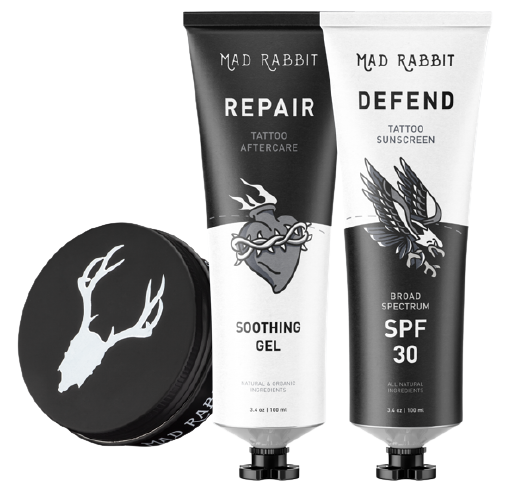
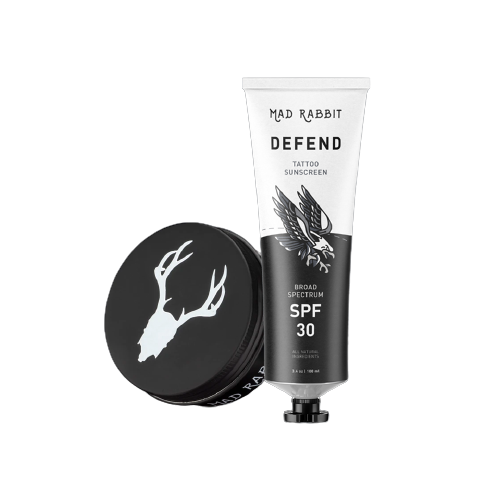
Daily Defense Set
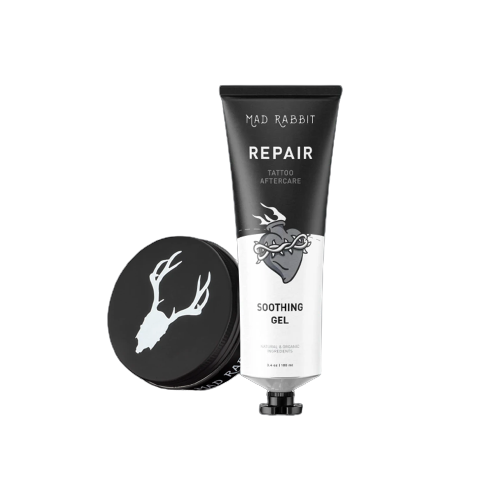


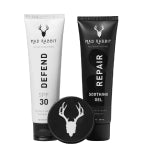
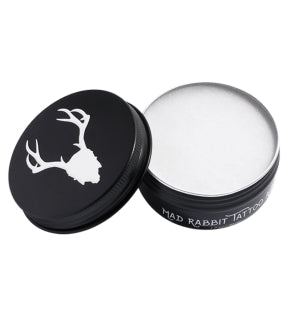
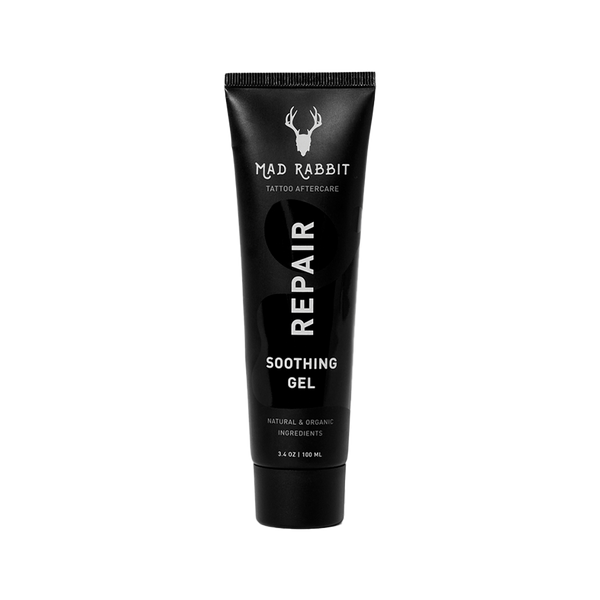

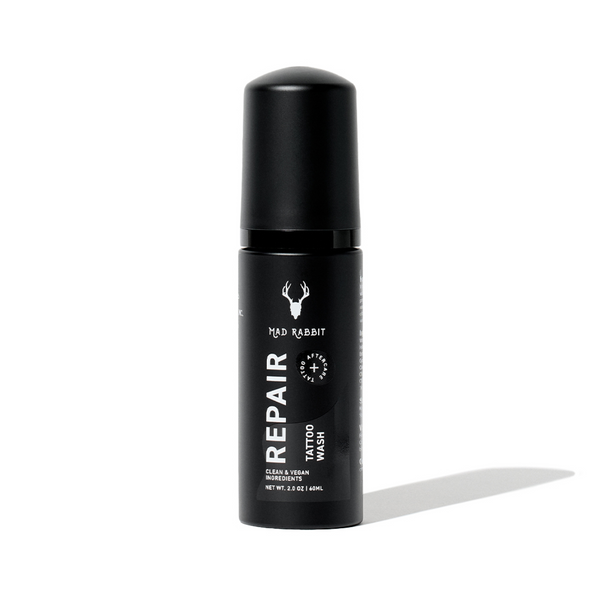
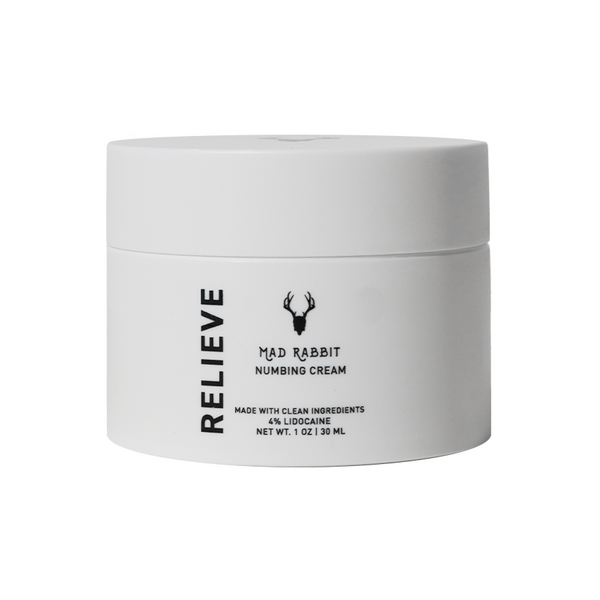
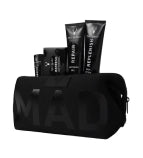
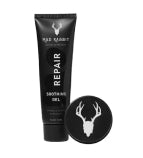
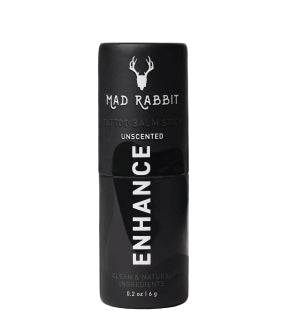
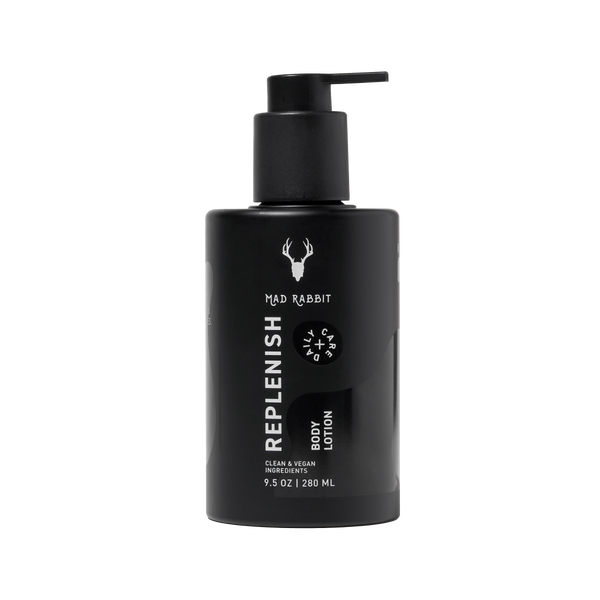
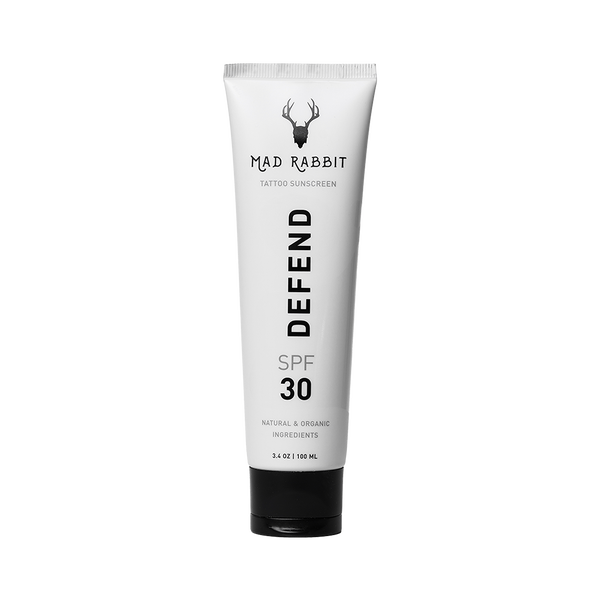
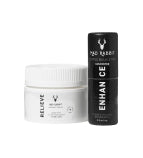
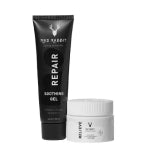
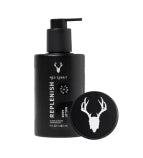
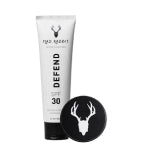
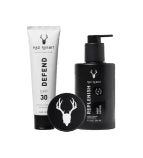

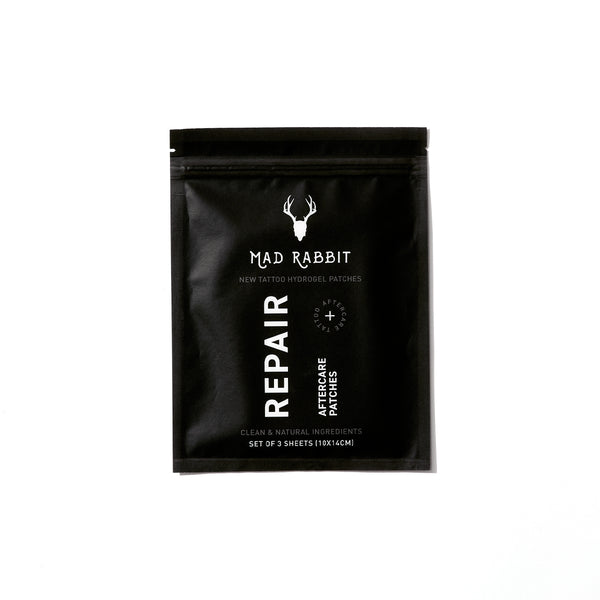
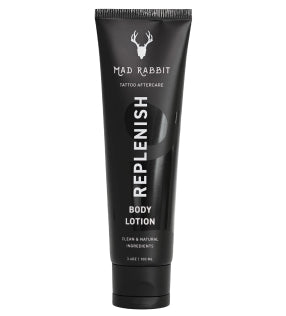
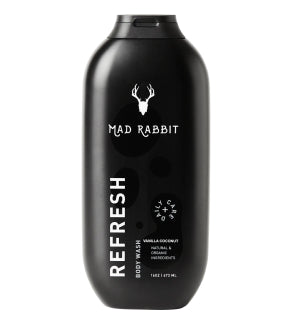

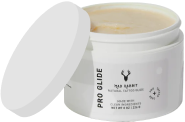



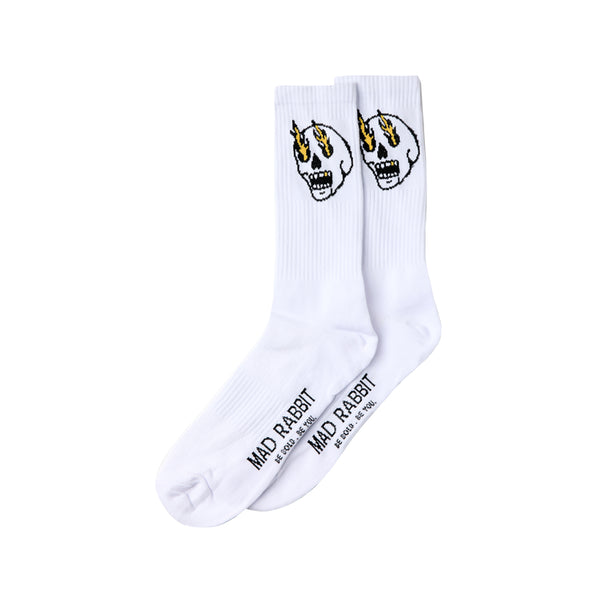
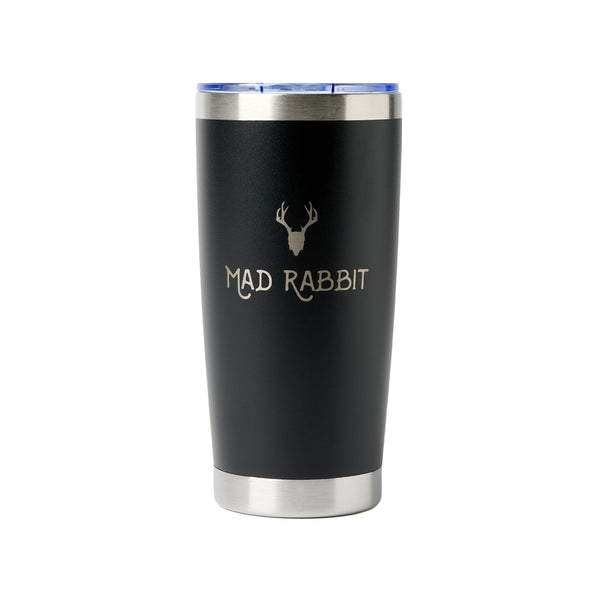

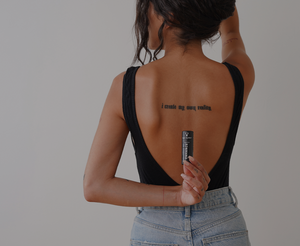
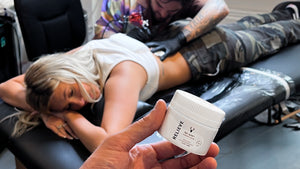
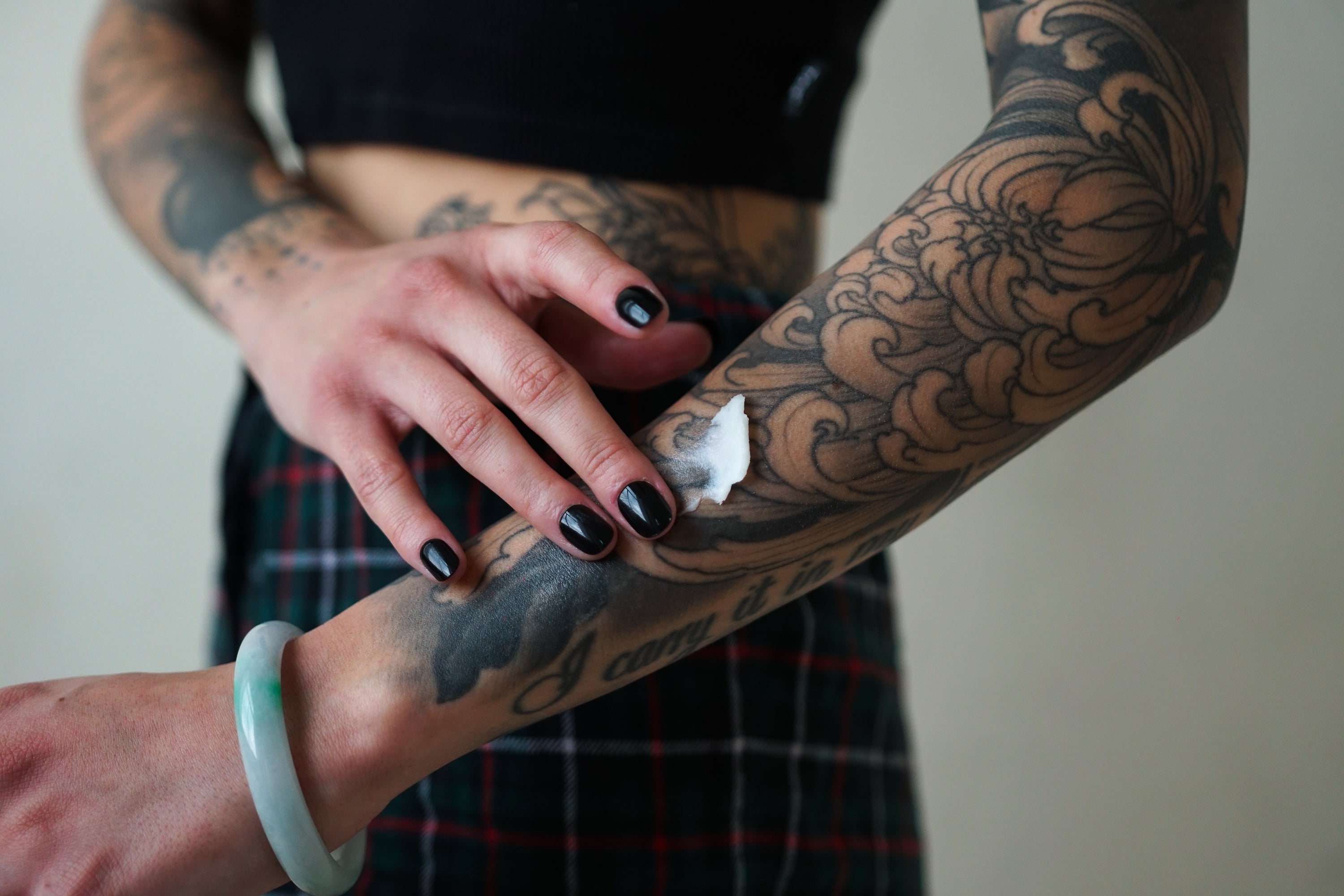
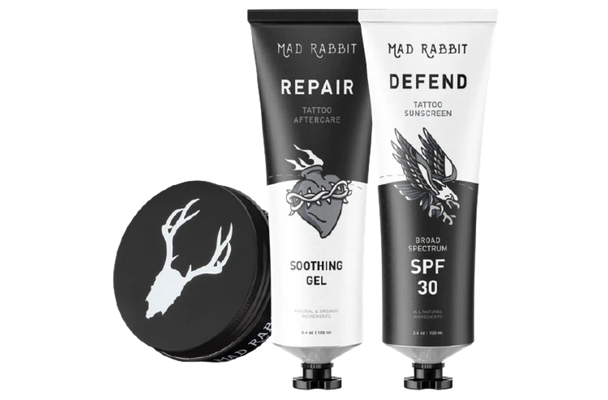

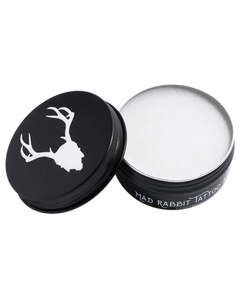
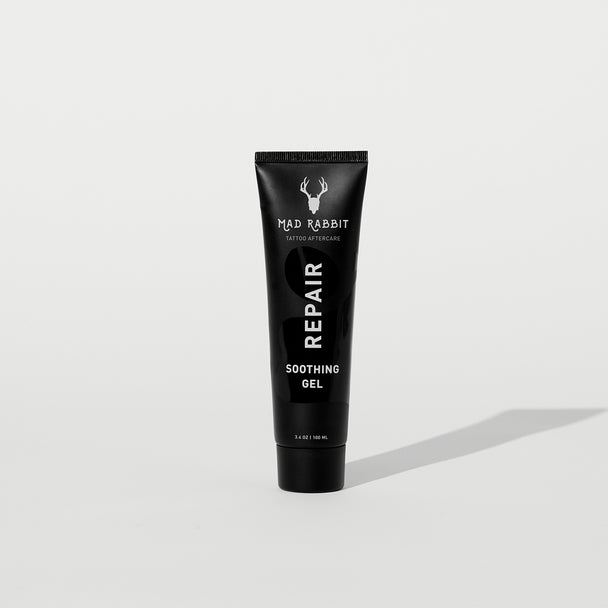
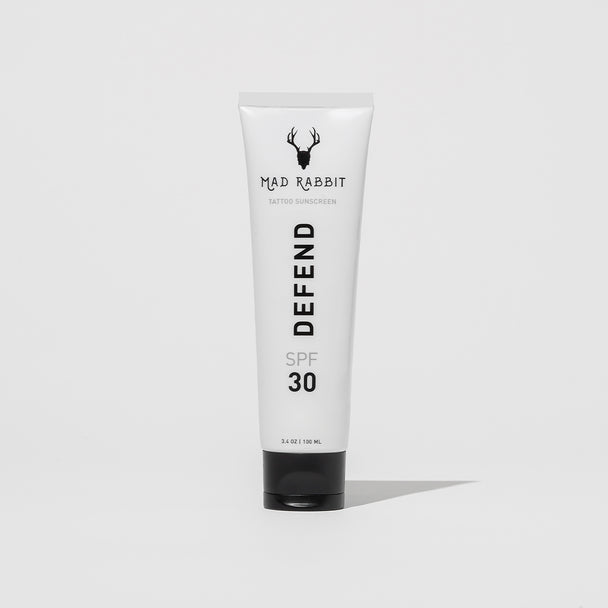
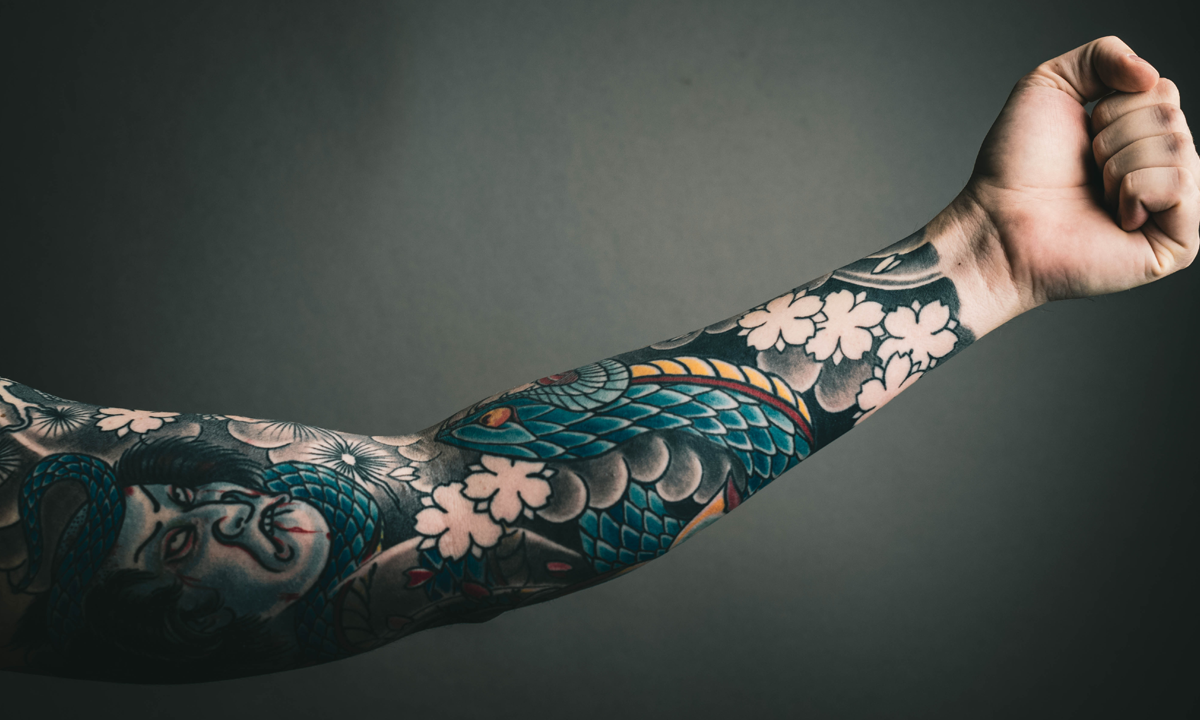
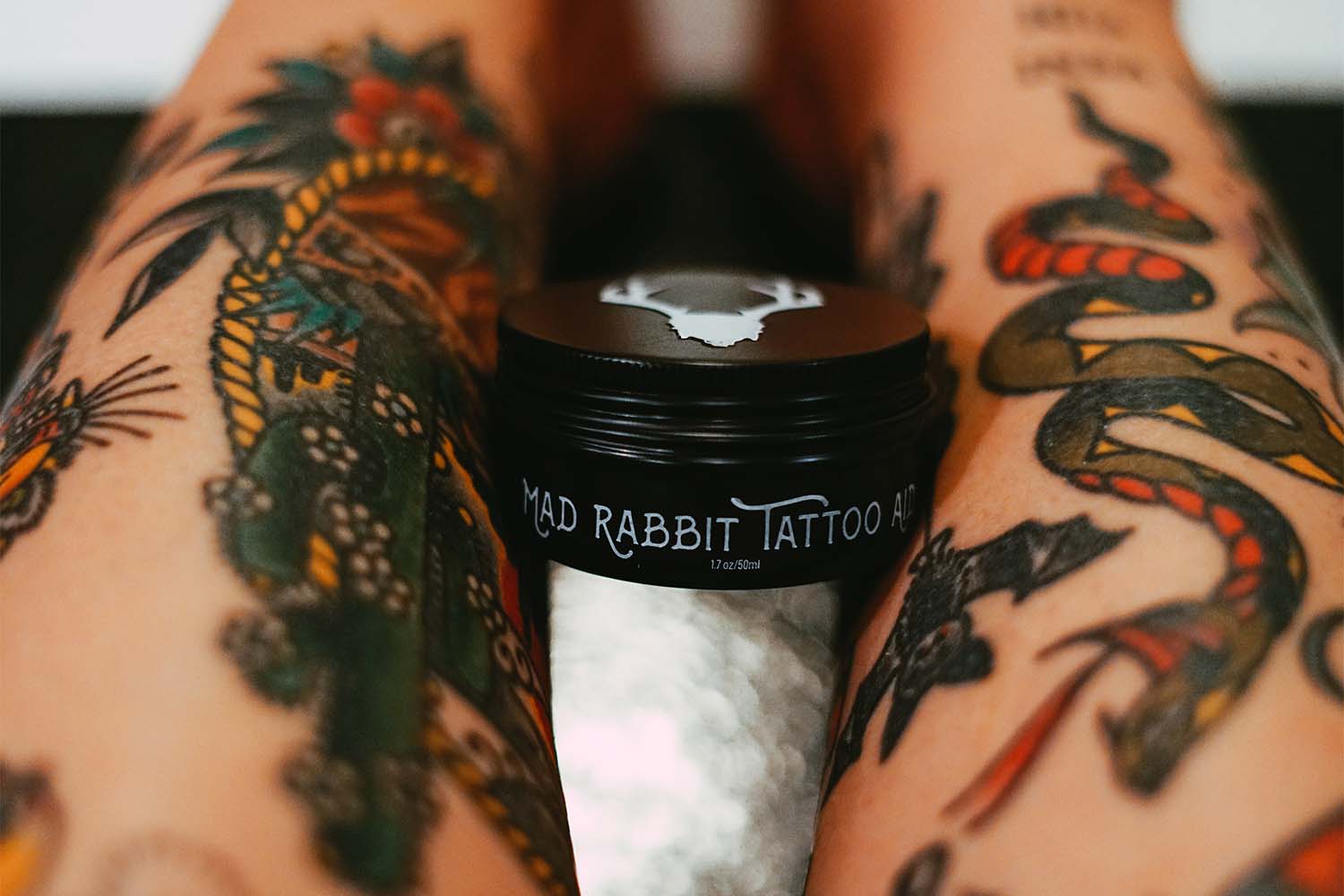
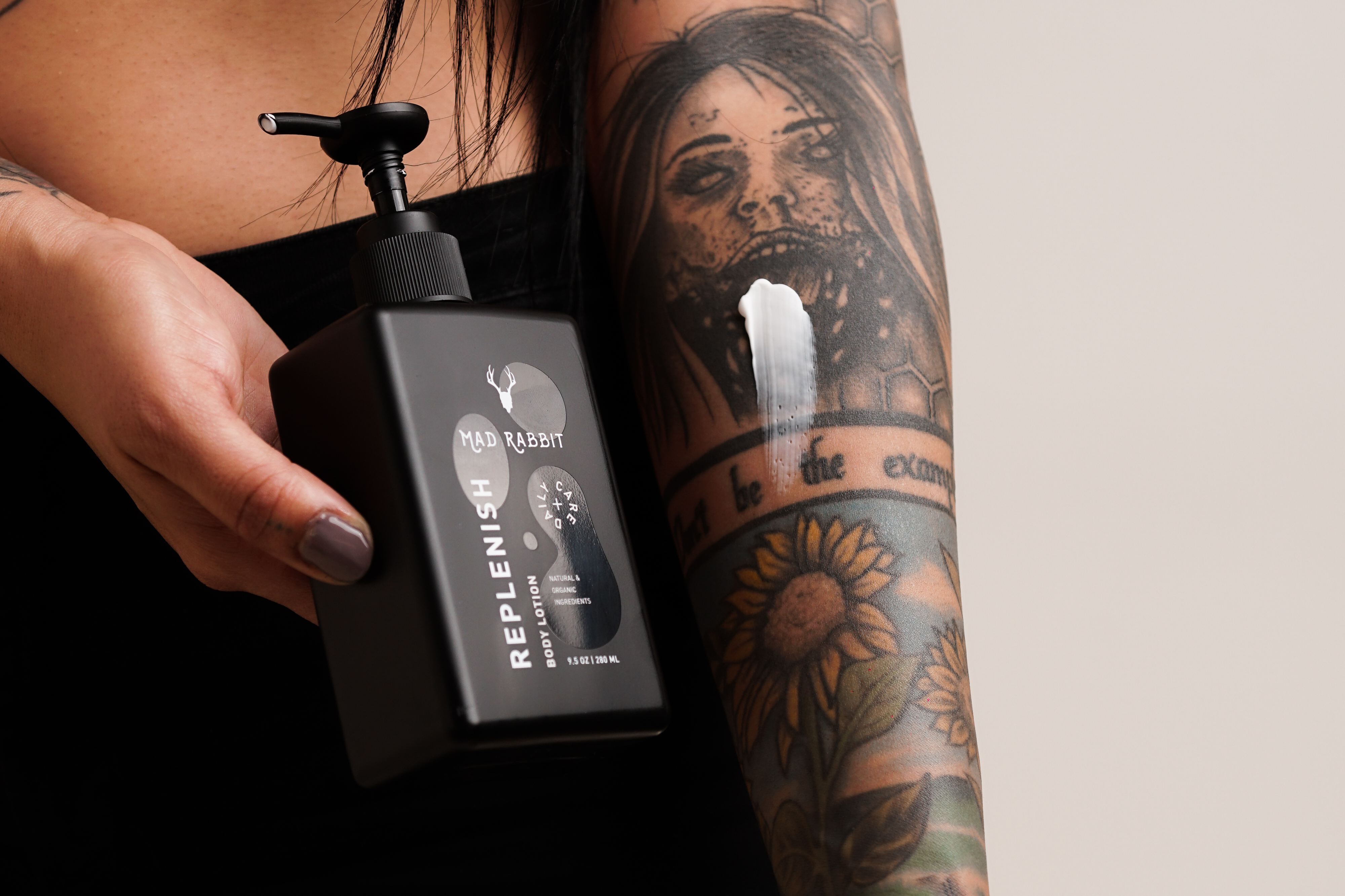
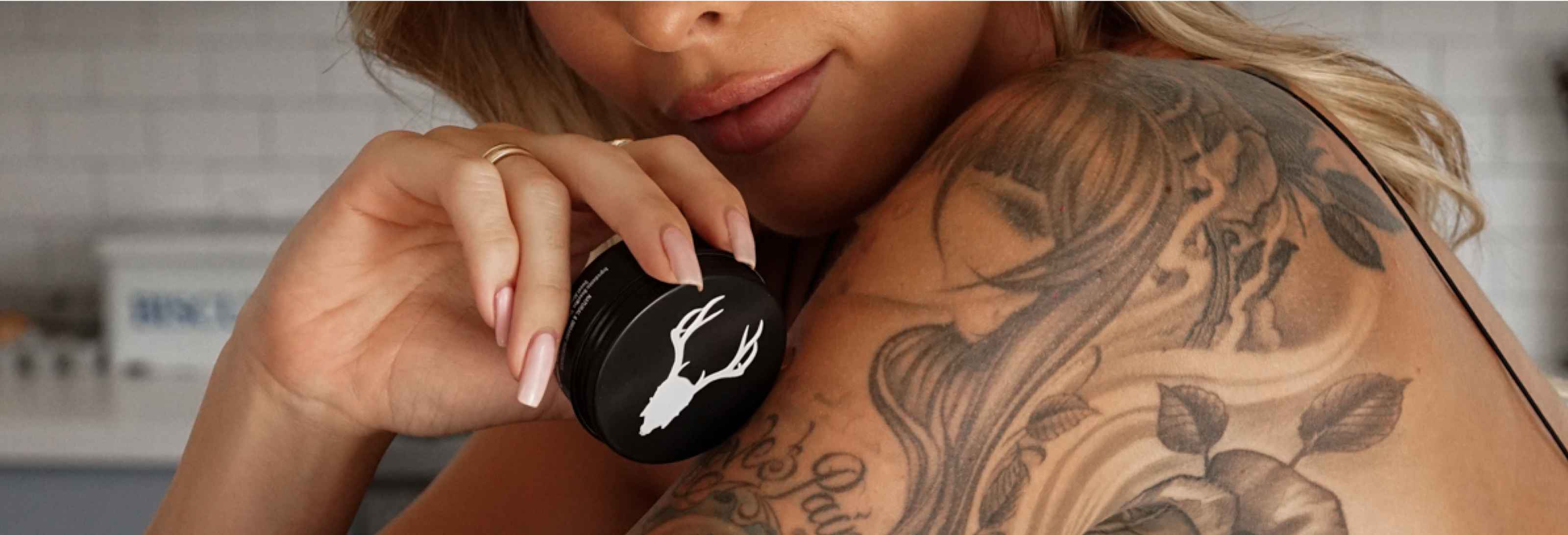
Join the discussion